|
Those of us managing paid media accounts might be neglecting strong insights which are available to improve our mobile sites. This is especially true when using Smart Bidding since device bidding is relatively hands-off compared to Manual CPC bidding. Google Ads updated their Test My Site tool earlier this year to include more custom recommendations for mobile site improvements. While Google Ads account managers likely have little power to improve mobile site speed, mobile user experience directly impacts the performance of our marketing initiatives. Mobile Speed MetricsTo begin, let’s review the mobile speed metrics available in the Google Ads UI. Once you’re in the Landing Pages view in Google Ads, you can see each of these metrics for your landing pages. The below example shows that several landing pages have less than a 7/10 on mobile speed score. While all of these pages are mobile-friendly, there are needed improvements to load times.
Test My Site ToolTo begin the testing process, enter the domain of your site on this Test My Site page. The tool then provides a rating and monthly trend. Below are the results for the website where we’re seeing 5/10 and 6/10 mobile speed scores. Advertising outside of the United States? Google provides a drop down for different countries and networks.
Building a full report using the tool is simple. The Test My Site tool next walks you through steps to benchmark your mobile site’s performance. Comparing Against Competitor Mobile Site Speed:Input domains of your top competitors to see how your site compares. Comparing this report to auction insights of the same domains can help in developing insights as to why certain competitors in the auction are able to spend significantly more than you.
Estimated Revenue Improvements:The Test My Site tool even provides an estimated lift in annual revenue based on current site visitors, conversion rate and average order value. This estimate can help clients and colleagues understand how much a poor mobile site speed is impacting overall revenue.
Specific URL Recommendations:I find this section of the tool most useful. Google provides specific recommendations for any URL on your domain. For example, the below recommendations are for the highest spending landing page in the Google account that currently has a 5/10 mobile speed score in Google Ads. Rather than ask a developer to improve mobile speed, provide these recommended mobile site updates to point them in the right direction.
Once you complete each report step, share with your clients or colleagues and begin making the recommended improvements. Additional Mobile Testing Tool:Mobile/Responsive Web Design Tester This Chrome extension allows you to see what landing pages look like on specific mobile devices. Oftentimes, mobile user experience is an afterthought. Before utilizing new landing pages in your ads, preview the page using this tool. Better yet, do an audit of your top trafficked landing pages and identify opportunities for mobile site improvements. from https://www.ppchero.com/utilizing-googles-test-my-site-tool-to-improve-mobile-performance/
0 Comments
 Lead generation is the number one challenge for marketers today. And it’s only going to get harder now that most Google search results pages have become saturated with promotional lead magnets masquerading as “great” content. There are millions of free resources out there already competing for attention. And customers are quickly catching on to the fact that most of these “Ultimate Guides to Dog Grooming” aren’t really worth giving up their personal information for. Jessica Meher, VP of Marketing at Notarize, put it really well on Twitter:
To stand out, you need more than quality content. You need to think outside the box. Try something a little bit different. Maybe even a little bit experimental. For inspiration, we talked to some of the most legendary marketers working today and asked them to share their most creative lead gen examples. And believe me—some of these folks needed QUITE a bit of convincing to spill their most useful and interesting ideas. But we got ‘em here for you: 10 unique examples lifted straight from the private swipe files and secret marketing playbooks of the pros. Use these ideas as inspiration for your next lead gen campaign. Or, just keep them handy for the next time you want to try something more interesting than creating another ebook or webinar. Ready? Let’s get cooking. Jump to a Creative Lead Gen Example
If you’re creating a lead gen campaign, make sure you check out our professional landing page and popup templates. You’ll be able to optimize your page design to earn more conversions and qualified leads.
1. Create an Interactive ToolThere’s a good reason why so many brands—including HubSpot, Moz, and, yes, even Unbounce—have invested time and effort to create free tools. Tool-based marketing is popular because even simple interactive ideas can generate boatloads of qualified leads. For example, Larry Kim, CEO of MobileMonkey, says they developed a Free Keyword Tool for the Wordstream website. Marketers could use it to research and prioritize new keywords in just a few minutes. And while developing an interactive tool might seem like a lot more work (you might need someone who knows how to code), Larry says they were able to generate a huge number of leads as a result.  Here’s how the tool works: you start out by entering a keyword or website URL that you’re interested in analyzing. To hone the results, you can also choose the industry and country you want to focus on. What makes this tool particularly clever is the way it displays the results. Hit the “Search” button, and you’ll instantly be able to see some of the related keywords. But all the other information? It’s hidden, blurred out, or obscured in some way.  This smartly creates a curiosity gap for visitors, who feel like they’ve already started the process of doing research on their keyword. All they need to do is take one teeny-tiny extra step to get their results. That final step? You gotta give up your email address. Boom, lead generated.
PRO TIP: Even a simple tool can be expensive to create. When considering your tool-based marketing idea, speak with a sample of your target audience first to see if they’d be interested.
2. Embed Your Lead Gen Forms in VideosI believe it was old Billy Shakespeare who once wrote: “To gate or not to gate? That is the question. Whether ’tis nobler in the mind to suffer the slings and arrows of outrageous website traffic, or ask for an email address against a sea of troubles…” At some point, every marketer faces this dilemma. You have an amazing piece of content—now are you going to give it away for free as a way to attract organic traffic? Or do you gate the content and use it as a lead gen magnet? Cara Hogan, Content Strategist for Zaius, considered these options and asked--why not both? For their Marketing Unboxed series, Cara says they took a hybrid approach to gating each video. Rather than lock up their content entirely behind a lead gen form, they actually embedded forms into each video so they showed up as you watch.
 The forms draw just the right amount of your attention, without being too distracting. It slides off the video if you move your mouse off the screen, but then pops back on whenever you come back. All in all, a very classy approach that Cara says has driven some serious results.
3. Interview a Third-Party ExpertFor many brands, consistent blogging is one of their main sources of lead generation. Every time you put out an article, it’s an opportunity for someone new to visit your site, discover your brand, and opt in for more communications. And there’s nothing wrong with looking outside of your own organization and team for content, either. Stepping outside of your comfort zone and providing a fresh perspective can actually be a fantastic way to bring in new audiences.  Take, for example, this lead gen example brought to us by Aaron Orendorff, Content Strategist for iconiContent. To help Shopify Plus rank for some valuable keywords, such as “ecommerce replatforming,” Aaron interviewed a high-profile expert in the industry. Aaron says it’s the quality of the interview that makes this lead gen example work.
But wait, how do you actually generate leads with an interview or blog post? Well, Aaron explained that they peppered the article with three separate lead gen CTAs (including an Unbounce popup) to present visitors with downloadable content upgrades, related to the topic of the interview. 
Popups and sticky bars can turn any high-traffic page into a lead generator. Find out how you can use these targeted offers to drive more conversions.
4. Send Attention-Grabbing Direct MailDirect mail might seem like an old school marketing tactic, but that’s exactly what makes it so darned interesting for lead generation. Why not focus your efforts on a smaller customer segment, and put together packages that really get them to sit up and take notice? Take, for example, these direct mailers that Hero Conf sent out to promote their PPC marketing conference. The event organizers took a pretty interesting approach to get the attention of marketers like Casie Gillette, Senior Director of Digital Marketing at KoMarketing:
Each piece of mail embedded a small video screen to show clips of the presenters who would be speaking at Hero Conf. And while these must have cost a fair bit more than a typical event brochure, Casie says the unique packaging really helped to win her over.
5. Share a Customer Experience to Spark Brand SearchesAndrew Davis, best-selling author and keynote speaker, recently pointed out that most video testimonials are pretty dry. They’re usually just a lot of talking heads, with nervous customers babbling on about all the reasons why they like some marketing brand. But there’s also a different type of video testimonial—one that actually tells the complete customer story. And although these can be harder to produce, they can also serve up a different type of indirect lead generation for your business. As an example, Andrew suggests watching this video on YouTube that recently went viral: Vance’s Incredible 365-day Transformation. The video currently has over 31 million views and 50,000 comments on YouTube.  Unlike other video testimonials, this customer story is shot in real time. It’s compelling, it’s emotional—and it doesn’t have a single call to action. Instead, Vance mentions throughout the video the diet and exercise program he is using to lose weight. The references start out subtle, but eventually become a main focus of the video. Andrew calls this an “implied CTA” that generates leads by inspiring viewers to take the next step.
If you want to try this for yourself, all you need to do is start thinking about how you can frame your customer stories more like, well, stories. Connect with viewers on a personal or emotional level, and tease out the results so they get curious to learn more. 6. Connect via CommunitiesFor freelancers, consultants, and smaller marketing agencies, you might have to take a slightly different approach to lead generation. While you can still build lists using your website and landing pages, a lot of your success will also come from word of mouth and social interactions. For example, Nichole Elizabeth DeMeré, B2B SaaS Consultant, says their go-to lead generation strategy has been to build sincere connections with other people, in both online and offline marketing communities.
Nichole says that being an active community member on websites like Growth Hackers has often lead to them becoming a part of the team, responsible for either community management or growth.  As you build relationships and demonstrate expertise, people will naturally start to think of you or your company for future opportunities. The key is to be genuinely helpful and selfless in your interactions, and to try to build actual friendships with other members of the community.
7. Promote a Personalized TemplateThe right template on the right page can be a powerful tool for generating leads. That’s because visitors are willing to give up their personal information in exchange for something practical they can actually use. But while traditional templates are usually just generic PDF downloads, Ross Simmonds, digital marketing strategist, says you can get better results by making a downloadable template that’s more personalized and interactive.
As an example, Ross points towards this Free Privacy Policy Generator created by Shopify.  Privacy policies are one of those things that ecommerce business owners know they need, but probably don’t have time to create. And while Shopify could have given their visitors a sample policy or instructions on how to create their own, instead they decided to go above and beyond by building a personalized template generator.  The form you fill out to generate your privacy policy serves two purposes. Not only does it help personalize the template with your company info, but it also lets Shopify follow up meaningfully with every lead that uses the tool. How cool is that?
8. Look for Unique Cross-Promotion OpportunitiesCross-promotion isn’t a new idea, but it’s not something too many marketers think about strategically when it comes to lead generation. The hard part, of course, is finding the right brand to partner with. If the other company is too similar, then your audiences might already be overlapped. If the other company isn’t similar enough, then you run the risk of promoting to people who just don’t care about your brand or products. This is where a bit of outside-the-box thinking can come in handy. Britney Muller, Senior SEO Scientist at Moz, points to this particularly clever example of cross-promotion between Hydrate IV Bar and Live Love Lash:  Rather than partner with another health or fitness company for their cross-promotion, the marketers at Hydrate IV Bar decided to try a different strategy. They thought about different places where their target customers might be available to try an IV bar, and struck up a smart partnership based on that:
And the thing is, there are all sorts of unique cross-promotion opportunities available that marketers might miss. Let’s say you’re a running shoe company, for example. The obvious cross-promotion opportunity would be a sports store, right? But you could also partner with a gym or training facility, and target athletes in the places where they spend the most time. 9. Create an Interesting Side ProjectSometimes, the best leads can come from the projects that have very little to do with your actual business. If you dig into related topics, you can discover whole segments of customers who otherwise might not have been exposed to your brand or marketing. And when it comes to side projects, Ryan Robinson is a self-described aficionado. Once, he launched a public challenge on his blog to validate a random business idea in under 30 days with only $500.  The project took up a lot of Ryan’s time for that month, even though it was something he was doing on the side. He figured it would just be an interesting way to educate readers on how to validate their business ideas, and perhaps bring in some new audiences to his blog. But he was surprised by the number of leads he was able to generate as a result.
To take advantage of all these new leads, Ryan even built a new course based around his learning. 
10. Publish a Surprising QuizOnline quizzes have been around for years, but many marketers still haven’t discovered their potential for lead generation. They’re powerful because they’re so compelling—visitors actually have fun filling them out, and then get super curious about the results. (“Why yes, I do want to know which piece of IKEA furniture best represents my personality.”) To find a creative quiz example, we went to the quizmaster herself, Chanti Zak. Chanti is a quiz funnel strategist and copywriter who specializes in creating quizzes for lead gen, and really brings a special flair to the quiz creation process. As an example, she shared this saucy quiz she created to target entrepreneurs for Jenna Kutcher’s website.  The key to a great quiz? You’ve got to surprise and delight visitors with every click, so they stay engaged throughout the process. Throw them a couple curveballs along the way, and then hit ‘em with results that speak to their unique situation.
 To attract the most leads, you’ll want to create a quiz that speaks directly to your brand and target market. For this example, Chanti created playful questions and answers that really get in the headspace of a budding entrepreneur. And the strategy seems to have worked too, with this quiz alone generating over 100,000 leads.
Are You Ready to Take the Lead?Of course, we’re only scratching the surface with these 10 ideas. There are all sorts of different ways to generate leads, including more tried and true methods. You could always host a webinar, offer a free ebook download, run a contest, or buy ads on social media. Whatever you try, the most important thing to remember is that in order to generate qualified leads, you need to offer up quality content. Give those top-of-funnel leads something that’ll educate, entertain, inform, or inspire and soon you’ll be overwhelmed with too many leads. (#firstworldmarketingproblems) Share in the comments below if you have another method of lead gen that works well for your business, or if you think there’s something we missed. The more ideas we can round up, the better! from https://unbounce.com/lead-generation/10-creative-lead-gen-examples-sourced-from-marketing-legends/ In this case study, we compared the transaction data from Alibaba’s company profiles for their suppliers to the data displayed in Jungle Scout’s Supplier Database. We hoped to learn whether or not manufacturers that seem legitimate on Alibaba are, in fact, legit, or if they may be inflating their numbers or are actually trading companies. Here are a few things to know about this case study: Subjects: The five companies selected were chosen at random, using the following keyword search terms: bamboo sticks, drinkware, headphones, yoga mats, and card games. Tool #1: Alibaba is a massive, international retail site that connects businesses with suppliers. The majority of these manufacturers are located in China. Tool #2: Jungle Scout’s Supplier Database gathers transactional importer information from US Customs and Border Protection’s Office of Trade, and then displays the data in an easy-to-understand format. Company #1 – Xiamen Haoliyuan Bamboo Products Co., Ltd. Products: bamboo sticks What does Alibaba say? According to Alibaba, Xiamen Haoliyuan Bamboo Products Co., Ltd. was established in 2015. The site also states that the supplier generates $1-$2.5 million in annual revenue, with 11.08% of that revenue generated from buyers in North America. What does the Supplier Database say? ... Read More The post Case Study: Alibaba Sales Numbers vs Reality for Five Random Suppliers appeared first on Jungle Scout: Amazon Product Research Made Easy. from https://www.junglescout.com/blog/alibaba-vs-junglescout/ The asset management industry isn’t what it used to be. In the face of continued growth, the market has become increasingly crowded and fiercely competitive. But while competition has increased, differentiation among investment offerings has diminished. What’s more, there’s been a fundamental shift in the relationship between clients and brands. In today’s customer-centric business climate, investors expect firms to provide them with modern, highly personalized experiences—wherever they are, and on any device they choose. Consider these statistics:
Today’s evolving industry landscape has introduced unexpected challenges for asset management firms—and marketing leaders are under pressure to keep up. Two Essential Elements of a Modern Marketing StrategyAn asset management marketing team has two central functions: to help recruit and retain advisors and to help acquire and retain clients. In a crowded market where customer expectations have changed, that’s easier said than done. Indeed, as firms struggle to differentiate themselves, marketers are quickly learning that traditional acquisition and retention strategies are no longer effective. Today, firms that can build deep, long-term relationships with their target audiences—and deliver truly meaningful experiences—will rise above the competition. The keys to building those relationships are aggregating your customer data and then acting on that information in a timely fashion. Five Tactics for Creating Clear DifferentiationHere are five ways marketers can deliver superior value to clients—to improve acquisition and retention: 1) Get PersonalToday’s investors expect their communications with asset managers to be personalized and highly relevant to their needs. The challenge, of course, is achieving this level of service at scale; traditional batch and blast emails simply won’t work. Through the use of demographic and behavioral data, segmentation, and lead scoring, firms can gain the rich, 360-degree customer view they need to deliver the personalized messaging clients expect. 2) Facilitate CommunicationModern clients—regardless of age—have become digitally savvy. They’ve grown accustomed to getting answers and access to information on the go, across multiple devices. The problem is, many asset management firms developed their various touch points in silos, thereby creating a disjointed and sometimes disorienting customer experience. Delivering connected communications requires an omnichannel approach. The right automation solution should allow teams to deliver seamless conversations—as clients (and advisors) move from their phones to their laptops to their tablets, and beyond—all from a single platform. 3) Build TrustAsset management is a high-stakes service and building client trust is crucial. While providing a personal touch is central to creating meaningful relationships, steps must be taken to safeguard client privacy. Asset management firms must adhere to strict regulations surrounding marketing investment management and the handling of client funds. Indeed, compliance is a fundamental concern. Marketing leaders must ensure that their systems—and their marketing teams—are always up to date on new rules and regulations. A trusted engagement platform, with high-security standards, will enable marketers to deliver personalized experiences, across multiple touch points—with a keen eye on privacy and regulatory compliance. 4) Find TruthHistorically, the asset management industry has been cautious about new MarTech trends. As a result, many marketing teams are still operating on outdated, disparate systems, including their CRM solutions. Building and nurturing meaningful client relationships requires a single source of data truth. By creating a centralized repository of data and insights, marketers can move from a reactive acquisition and retention strategy—to a proactive one. A single source of truth will also help brands deliver consistent messaging across sales and marketing. An automated marketing solution that easily integrates with CRM platforms—as well as multiple solution partners and open APIs—is essential. By gathering multiple data points in one location, it will provide the single source of truth marketers need to create the personalized experiences clients demand. 5) Prove ROIFor many marketing leaders, creating a strong marketing strategy is only half the battle. The next step is to prove their efforts are yielding real results for their institutions. Marketing teams must be able to effectively measure—and continuously improve—the impact of their programs. A fully optimized marketing engagement platform—one that puts all marketing data into a single view—will enable more robust reporting. Indeed, it will empower teams to move way beyond click-through rates—to measure multi-touch attribution, pipeline, and true ROI. The post 5 Strategies to Address New Challenges in Asset Management Marketing appeared first on Marketo Marketing Blog - Best Practices and Thought Leadership. from https://blog.marketo.com/2019/04/5-strategies-to-address-new-challenges-in-asset-management-marketing.html Several of my clients are in the Education vertical with their main goal of driving more leads to their admissions until finally, a user enrolls as a student. While the goal might sound simple, some of my clients make the task a bit harder by have multiple brands targeting the same keywords or target audiences. Below I am going to walk through one situation with my client where we make specific decisions about when our brands overlapped and other times when it was decided a certain brand was going to take ownership of the impression share. Getting Down to BusinessRachael Law’s piece, “Analyzing the Impact of Multi-Brand Shared Keywords” is a great place to start to see if you have any overlapping keywords and if so how is each brand affected by the overlap and how to talk to your client about what decisions you need to make moving forward to help each brand. With my client, we started in the opposite direction and we had zero keywords overlapping between the six different brands. The original theory was that by sharing some keywords we were only going to increase our CPCs by driving up our own prices to get to the top of the page. Also, the client was a bit wary of having two ads for their school showing up side by side and how that could be confusing for the user. Another reason for the hesitance between sharing keywords was how the programs don’t share any budgets. Each program has its own budget from the school and the programs want to make sure they are using their marketing dollars efficiently and not creating an internal bidding way. The SituationWhile our keywords did not overlap for these brands, the target audiences most certainly did. My client is a postgraduate institute with each program separated into its own Google Ads account with their niche keywords. Across all brands, we were targeting people from the ages of 22-44 who were looking to advance their careers by furthering their education. One of their larger programs had the majority of the higher funnel keywords which drove a lot of traffic for people in the research stage of picking their next degree. What this created was a surplus of traffic going to the already popular program instead of allowing some of the other postgrad programs a chance to shine on the top of the SERP. We noticed this problem when the other programs were having trouble spending their monthly budgets and our keyword expansions hit a wall since we didn’t want to add any keywords that were in the other five accounts. After feeling like we were stuck behind a wall, we decided that we were going to try sharing some keywords across some of the programs. We pulled keywords from the main program which had a lot of high funnel keywords and divided these up among the relevant campaigns. When we split these keywords up there were some programs where the client wanted one program to appear above the other for some keywords and then vice versa with the other keywords. The selling point to the client was that we could potentially have two ads running side by side but with the ad copy being very specific to the program to allow the user to decide which program they wanted to investigate instead of only giving the user one option. In Paid Search, the impressions are free and the user gets to pick their own adventure, for example, do I want to research about getting my MBA full time or part-time? What Did I LearnIn the beginning, I mentioned Rachael’s blog, but now I am in a situation where I can utilize her tools for looking into spend for these keywords to see if one brand is performing the other programs. A quick tip I learned was to use keyword labels for the keywords that were shared in the other accounts to pull the reports in a flash. The first report I pulled for this client since our shared keyword implementation was really surprising because the CPCs were relatively the same, the number of clicks was about the same, as well as conversions. We will continue to pull these reports monthly to make sure these keywords are still impacting the right programs and we will continue sharing select keywords to allow more users to select their next great adventure. from https://www.ppchero.com/multi-brand-strategy-for-education-google-ads/ Amazon News Roundup, Volume 1 Seller chatter: In a message posted by Amazon_News, in the Amazon Services Seller Forum, sellers were told that there would be some changes made regarding tax collection. These changes apply to orders shipped to the District of Columbia or Nebraska, and took effect on April 1st, 2019: “Based on changes to the District of Columbia and Nebraska State tax law, Amazon will begin calculating, collecting, and remitting sales and use tax for all orders shipped to customers in the District of Columbia or Nebraska on April 1, 2019. “Your existing tax calculation settings, order details, and payments reporting will update automatically to reflect Amazon’s responsibility. No action to your tax settings or seller account is required. “Answers to common questions are available in the Marketplace Tax Collection FAQ. Consider working with your tax advisor to determine any ongoing tax remittance and reporting obligations your business might have. “For more information, see Marketplace Tax Collection FAQ 2019 “For more information from Nebraska, click here “For more information from the District of Columbia, click here” – [Thread] It appears that Amazon is clamping down on sellers who have multiple Seller Central accounts: “You have used more than one account to ... Read More The post Amazon FBA Seller News for the Week of April 19th, 2019 appeared first on Jungle Scout: Amazon Product Research Made Easy. from https://www.junglescout.com/blog/amazon-fba-seller-news-apr-19-2019/ Video ads are one of the most potent tools in a marketing arsenal. So why do so many event marketers ignore it? According to a 2018 Animoto report on social video trends, 93% of business score new customers from video marketing on social media. Eventbrite research shows that 94% of event creators who use video say it’s effective. While both reports highlight the power of video marketing, they also note that less than half of event marketers actually use this effective tool. That’s a lot of business to leave sitting on the table. Video clearly is engaging ticket buyers, but many event marketers are too intimidated to use the medium. After all, video is one of the most daunting types of content to produce. Your skills as an event organizer may not include filming and editing a promotional video—but it’s worthwhile to learn these few basics. Create event videos that drive buzzIn an increasingly video-driven advertising space, focus your efforts on three essential videos—two before the event and one after:
If you only have the bandwidth to create one video, prioritize based on your brand’s goals. If you want to drive ticket sales, create a launch video. If you want to improve your attendance rate and engage attendees, create an FAQ video. If your goal is creating clips you can use to promote your next event, create a recap video. When you release these videos certainly matters, but you must also create something that effectively engages your audience. The following three strategies will help you make videos that are informative and compelling: 1. Make the CTA your MVPYour CTA (call to action) is key because it shows viewers how to take the next step (buying tickets, for example). But how can a CTA call viewers to action if they don’t actually see it? Although placing your CTA at the end of a video feels natural, many viewers won’t stick around for the entire video. To ensure audiences see your CTA, place it in the middle of your video. Beyond perfecting the timing of your CTA, you also need to give viewers clear instructions in terms of what they should do. Instead of saying “Buy tickets,” use clear and specific language: “Swipe up to RSVP” or “Click the link in our Facebook event.” People aren’t going to take the next step if they don’t know how, so make your CTA as clear as possible. 2. Use size to strategize your Facebook spendIt’s counterintuitive, but smaller events mean you should put more funding toward Facebook video ads. At 2.27 billion users, according to NBC News, Facebook holds plenty of reach and is ripe for event marketing. Facebook also has more robust ad targeting, support for video, and searchability for events than any other social platform. Prioritize Facebook in your budget, keeping your event’s size as the key decision maker when allocating funds. Gather any location, demographic, or other important information about your audience, and then tailor your Facebook campaign to that base. Once you’ve homed in on your target, deduce your exact spend and plan the rollout and execution of each piece. By figuring everything out beforehand, your campaign’s resources will stretch further and your ROI will be more concrete. 3. Promote across online channelsFacebook is incredibly powerful, but a powerful video strategy requires more layers. Not everyone in your audience will be active on Facebook—and even if they are, a multichannel approach keeps them thinking about your event as they’re browsing online. Use video across these digital platforms:
There’s no better way for your audience to feel the buzz surrounding your event than video. Event organizers might lag behind other industries when it comes to video marketing, but that doesn’t mean it needs to remain the case. Use these marketing tips to take the mystery out of video—and drive sales. The post Event Marketers Are Ignoring the Power of Video—Here’s How to Catch Up appeared first on Marketo Marketing Blog - Best Practices and Thought Leadership. from https://blog.marketo.com/2019/04/event-marketers-are-ignoring-the-power-of-video-heres-how-to-catch-up.html When it comes to email marketing, one of the biggest challenges that media companies face today is the ability to translate insight into action. The reason? When publishers deploy email campaigns, it’s usually to deliver some value to the advertising side of the business. There may be partners who are sponsoring newsletters, or marketing teams may be looking for added-value ways to drive more traffic to display ads. But these systems are quickly losing their efficacy. The media industry is in flux, programmatic ad revenues are declining, and revenue teams are struggling to find new sources of profitability. They’re carving out new products for advertisers (i.e. native ads), launching creative monetization channels, and even building their own ecommerce platforms. They’re also repurposing their existing assets, like their in-house creative teams, into services-based revenue arms. Within this context, email is a low-hanging area of opportunity that’s universally accessible to almost every media company. In addition to delivering content to and engaging audiences, this channel is an invaluable source of data that can be repurposed into new revenue initiatives. Email is one of the most direct ways for organizations to reach their audiences on a 1:1 basis, which means that it is a rich source of information for research and new product development. 3 steps to Translate Your Advertiser Data into Additional Sources of Value1) Uncover Your Most Valuable AudiencesConnections are the currency of digital media today. Advertisers and audiences alike are looking for deeper, more positive interactions from their networks online. But it can be tough to differentiate a substantive connection from a superficial one when your success metrics are limited to pageviews, time on site, and bounce rates. That’s where email enters the picture. Media companies can identify their most engaged audiences through their email subscriber lists. Who’s opening newsletters regularly? What content are these individuals reading? Are they clicking on ads? The answers to these questions will give you the insights you need to generate more advertiser value. At a basic level, you can change your advertisers a premium for reaching your most engaged audiences. You can also develop and deploy custom campaigns that meet a very specific marketing goal. Because you’ll likely be marketing to the same engaged user base at multiple touch points, you’ll also create more predictability in terms of the ROI that you can expect to deliver to your advertisers. It pays to identify—and market to—your most engaged audiences. 2) Create a Comprehensive Conversion PictureYour email marketing data exists as part of an ecosystem with your social, mobile, and web analytics. When evaluating engagement with your newsletter, make sure that you look at the overall picture: how audiences are moving between channels and how these engagement patterns translate into results for advertisers. This information can help your company create unique targeting and campaign concepts that stand apart from other media companies. One compelling example to model here is BuzzFeed. This publisher has created a unique UX that it uses to deliver custom native ad products. And because its model is so tailored to its content and audiences, the company is able to predict and replicate results. The company’s secret? It’s no secret at all—it’s data from its massive inventory of engaging content. Think of your media experience as a puzzle. As important as email marketing data is, it’s only part of the overall picture. Know how everything fits together into one comprehensive conversion picture. 3) Focus on OptimizationsIn addition to helping build new products and revenue streams, your email marketing data can also help you improve upon what’s already working. Use your email marketing data to study engagement on a granular level. What pieces of content are your audiences finding most helpful? How much time are they spending with it? On which social channels are your subscribers sharing your content, and how much traction is it getting? Use this information to optimize the already-successful programs that you have in place for your advertiser programs. For instance, you could:
Share this optimization data with your advertisers, and they’ll be blown away. In a media world where the majority of publishers are still dependent on clicks and eyeballs, you’ll be well positioned to offer something different and of value. Last But Not LeastIf you’re not sure where to get started or how to fully utilize your email marketing data, talk to your advertisers. Ask what solutions and optimizations they’d like to see on the market. Take this information, and evaluate where your own email marketing data fits into the picture. After all, the industry is learning, growing, and evolving together.
This post originally appeared on HubSpot. from https://www.ppchero.com/from-email-metrics-to-inbound-marketing-taking-advertising-options-to-the-next-level/ First question: what if you could see how many sales your competitor is making each month? If I asked you that, you’d probably yawn. Nothing new, right? After all, Amazon product research technology has been around for as long as, well…Jungle Scout. Tracking your competitors’ sales is old hat at this point. So my second question is this: what if you could find out who your top competitor uses to manufacture their products, in 10 minutes or less? That might raise a few eyebrows, right? Well, check out this amazing and straightforward way to find the best Amazon FBA suppliers! Say hello to Jungle Scout’s Supplier Database Recently, we rolled out the new Supplier Database as part of our suite of Amazon seller tools. What this new Database does is it lets you find suppliers quickly and easily, without having to use a site like Alibaba. In addition, you can reverse engineer your competitors’ vendors just by typing in their brand name. So, as a test, we decided to check out all of the suppliers used by Jungle Scout’s Jungle Stix competitors. We wanted to verify the accuracy of the Database’s information. Step 1 – Making a list of our competitors ... Read More The post We Found All of Our Competitors’ Suppliers in 23 Minutes. Here’s How! appeared first on Jungle Scout: Amazon Product Research Made Easy. from https://www.junglescout.com/blog/find-suppliers-amazon-fba/ Time is running out to get your ticket to Hero Conf Philly!The conference is Tuesday, April 23 – Thursday, April 25 and includes two full, action-packed days of sessions and a 3rd day of workshops. You’ll see a variety of speakers; top-rated veterans that have roamed the world offering up valuable tip and tricks, as well as the newest up-and-comers in the digital marketing landscape. You’ll be surrounded by 44 Pros that are experts in digital media. The sessions range from beginner level topics to the most advanced strategies happening in the paid media industry. You’ll get everything from a Beginner’s Guide to Shopping Ads to Boosting Your Brand with Instagram Ads to CRO via Voice Search. Here’s a sample of the sessions at this year’s Hero Conf:
And just a side note – Hero Conf is NOT just for peeps that do paid media day in, day out, everyday all day. Even if only a small part of your job (for anyone on your team) includes managing your brand’s paid advertising, you will get a ton of value out of attending Hero Conf. Because paid advertising is a must in every brand’s marketing plan. No matter how little or how much you do of it, it impacts the bottom line of your business and provides insights for all your marketing channels. PLUS, you will literally be surrounded by the people that are the best of the best in the paid advertising industry. And they LOVE talking about paid advertising ? You’ll discover tips and tricks you didn’t even know you needed and make new connections that serve as great resources for your team. What else can you expect from Hero Conf? ALL THE NETWORKING!We know that getting the chance to network with peers and the speakers is just as important as the topics presented at a conference. So not only do you get to hear from leading experts on paid ads at Hero Conf, we also make sure there are plenty of opportunities to chat with other attendees and have fun too. There are 10 unique networking opportunities that will be available at Hero Conf Philly, including events at unique locations with specialty foods from local vendors to night events to networking breakfasts and lunches. Get to know PPC Heroes from across the globe!
I know, I know. You’re probably thinking, this all sounds great and exactly what I need, but WHAT’S THE COST?!?! Here’s a quick breakdown:
Hero Conf Philly starts Tuesday, April 23rd and will be hosted at the Philadelphia Downtown Marriott. Don’t miss out on this awesome event with the best people in the paid advertising industry. Register Nowfrom https://www.ppchero.com/last-chance-hero-conf-2019-starts-next-tuesday-april-23/ |

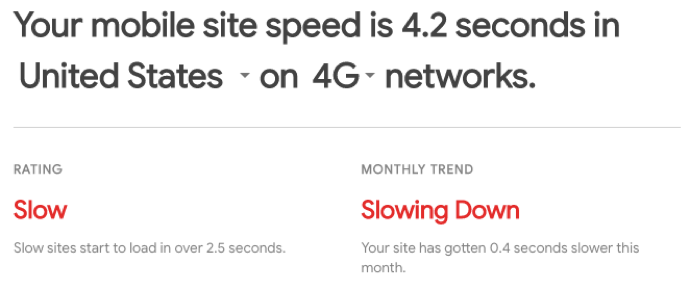
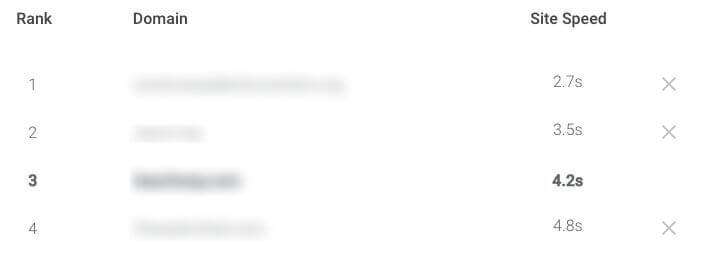
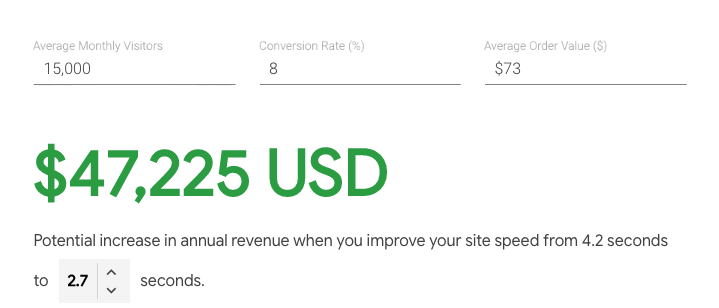

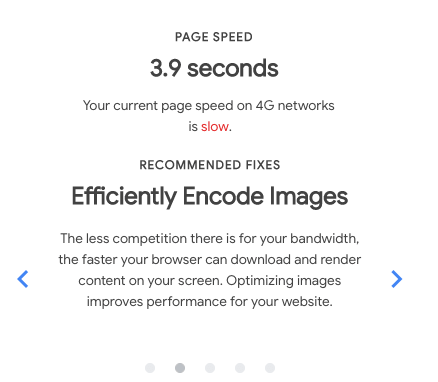















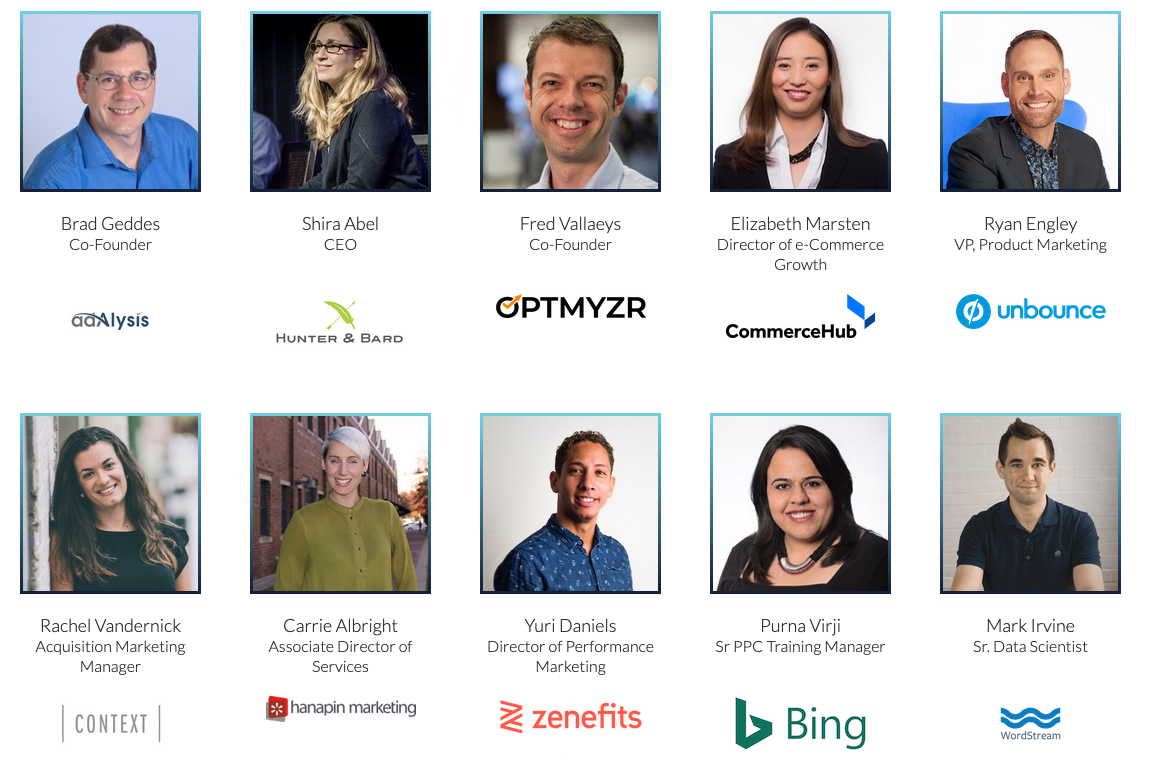

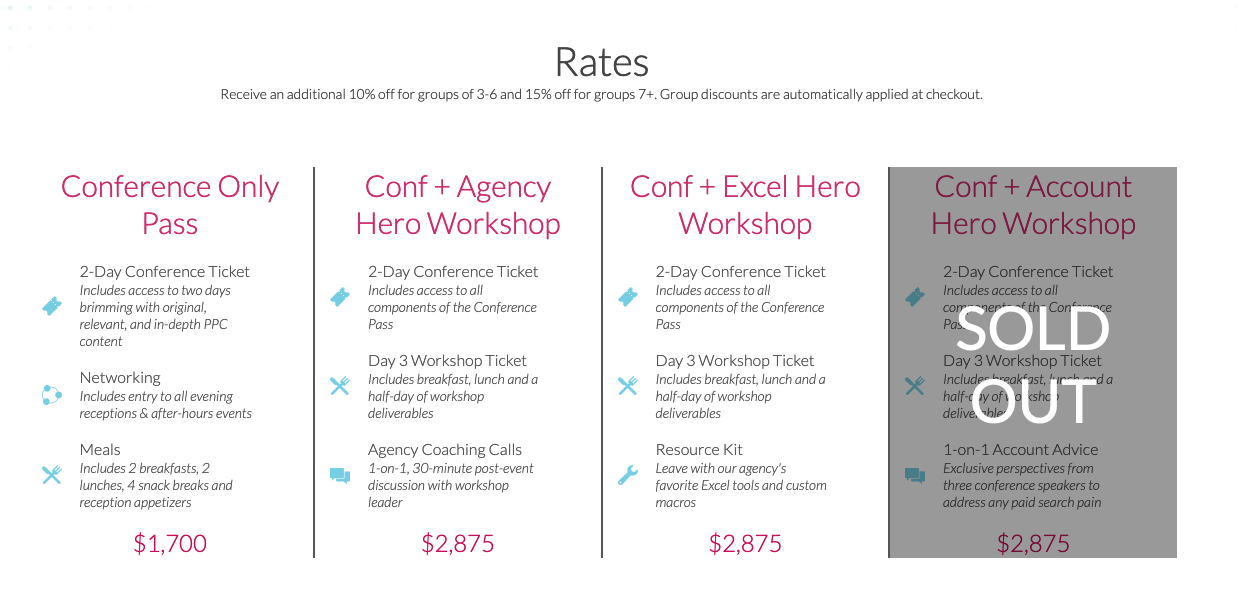

 RSS Feed
RSS Feed
